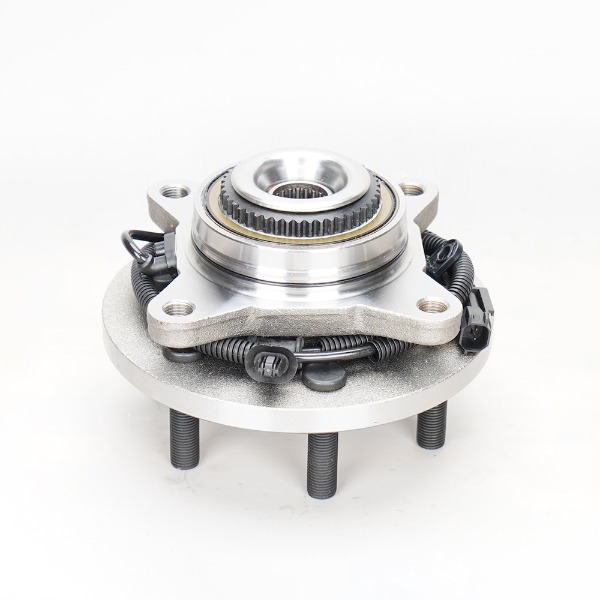In the intricate world of vehicle mechanics, wheel hub bearings play a pivotal role in ensuring smooth and efficient operation. Often taken for granted, these small but powerful components contribute significantly to the performance, safety, and durability of a vehicle. Whether it’s a passenger car, truck, or motorcycle, the wheel hub bearing is crucial for the rotation of the wheels, reducing friction, and enabling efficient driving performance.
Wheel hub bearings are designed to handle significant loads while minimizing friction. Their efficient functioning is essential for smooth vehicle operation, reducing wear and tear on the wheels and suspension, while improving fuel efficiency and overall performance.
At the core of the wheel hub bearing is a race, a smooth, circular track that holds the rolling elements—either ball bearings or cylindrical rollers. These rolling elements are positioned between the inner and outer races, allowing them to rotate freely within the raceway. As the vehicle moves, the wheel hub bearing facilitates the rotation of the wheels by reducing friction between the moving parts, allowing the wheels to rotate smoothly without excessive resistance.
The wheel hub bearing is designed to endure heavy loads and various forces, including the weight of the vehicle, the forces from braking, acceleration, and cornering. It also has to operate under high temperatures and resist contaminants such as dust, water, and road salt.

In addition to supporting the wheel, the hub bearing also includes seals to protect the internal components from contaminants and moisture. These seals help maintain the integrity of the bearing and extend its lifespan.
Ball bearings are the most common type of wheel hub bearings. They use spherical balls to reduce friction between the rotating surfaces. These bearings are known for their smooth operation and ability to handle both radial (weight-bearing) and axial (side-to-side) loads. Ball bearings are ideal for passenger vehicles, providing excellent performance in terms of speed, smoothness, and durability.
Tapered roller bearings use conical-shaped rollers to reduce friction and handle both radial and axial loads more effectively than ball bearings. These bearings are designed to support heavier loads and are typically used in trucks, SUVs, and other heavy-duty vehicles. The tapered design allows for better distribution of forces, making them ideal for vehicles with higher load-bearing demands.
These bearings have an inner and outer ring that is designed to handle both radial and axial loads simultaneously, making them particularly suitable for vehicles that experience high-speed rotation and heavy loads. Angular contact bearings are often used in sports cars or performance vehicles that demand higher precision and durability from the wheel hub bearing.
Sealed wheel hub bearings come with built-in seals that prevent contaminants like dirt, water, and road salt from entering the bearing. This type of bearing is ideal for vehicles operating in harsh environments, ensuring long-term reliability and protection against damage from contaminants.
The most obvious function of a wheel hub bearing is to allow the wheel to rotate freely. Without it, the friction generated between the wheel and axle would slow down the vehicle and cause unnecessary wear. The bearing reduces friction between these parts, ensuring that the wheels can rotate smoothly with minimal energy loss, thus improving overall vehicle efficiency.
Wheel hub bearings are integral to vehicle stability. They support the weight of the vehicle, and any failure in the bearing can affect the alignment and balance of the wheels, which may lead to poor handling or even accidents. Regular inspection of wheel hub bearings is necessary to ensure they are functioning correctly, as a failing bearing can lead to wobbling, steering problems, or complete wheel failure.
Efficient wheel hub bearings contribute to better fuel efficiency by reducing the amount of energy required to rotate the wheels. Additionally, their smooth operation ensures that the vehicle can accelerate, decelerate, and navigate turns with minimal resistance, which translates into improved overall vehicle performance.
High-quality wheel hub bearings are designed to last a long time, even under extreme conditions. Proper maintenance, such as ensuring that the bearing is sealed correctly and replacing damaged bearings promptly, can significantly extend the lifespan of the bearing and the vehicle. Poorly maintained bearings can wear out prematurely, leading to costly repairs and replacements.
While wheel hub bearings are generally durable, they are not immune to wear and tear. Over time, the components can degrade, leading to various issues. Here are some common symptoms of a failing wheel hub bearing:
One of the earliest signs of a failing wheel hub bearing is unusual noise, such as grinding, humming, or whining sounds that increase with speed. This noise is usually caused by the deterioration of the bearing’s inner components or lubrication.
If the wheel hub bearing is damaged, it may cause the wheel to wobble or vibrate. This issue can affect the steering and suspension, creating an uncomfortable or unsafe driving experience.
A worn or damaged wheel hub bearing can cause uneven tire wear, as the wheel may not rotate as smoothly as it should. Drivers may notice that their tires are more worn on one side than the other, which can lead to a need for early tire replacement.
If the wheel hub bearing fails, it can affect the vehicle’s alignment and steering. Drivers may experience difficulty turning or feel that the steering is not as responsive as it should be.
If there is noticeable movement in the wheel when the vehicle is stationary or when you grasp the tire and try to shake it, it may indicate that the wheel hub bearing is loose or damaged.






